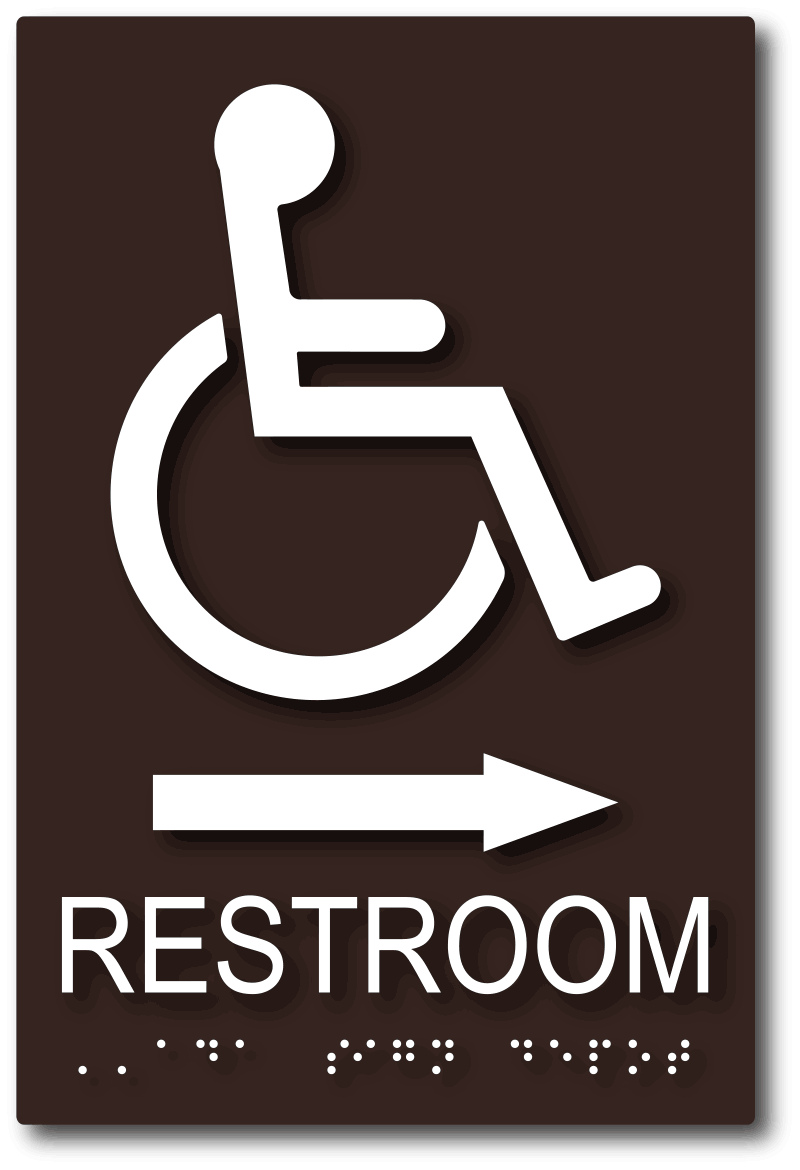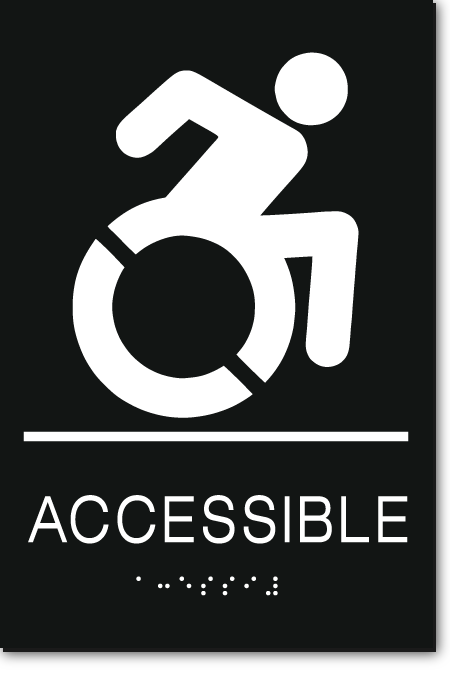The Impact of ADA Signs on Community Accessibility
The Impact of ADA Signs on Community Accessibility
Blog Article
Checking Out the Trick Attributes of ADA Indicators for Boosted Availability
In the realm of availability, ADA indications work as quiet yet powerful allies, making certain that spaces are inclusive and navigable for people with impairments. By integrating Braille and responsive aspects, these indications break obstacles for the visually damaged, while high-contrast color pattern and legible fonts satisfy varied visual needs. Additionally, their strategic positioning is not arbitrary but instead a computed initiative to assist in smooth navigation. Beyond these features lies a much deeper narrative concerning the development of inclusivity and the ongoing commitment to producing equitable areas. What a lot more could these indications represent in our search of universal accessibility?
Importance of ADA Compliance
Guaranteeing compliance with the Americans with Disabilities Act (ADA) is critical for promoting inclusivity and equal accessibility in public rooms and work environments. The ADA, enacted in 1990, mandates that all public facilities, employers, and transport solutions accommodate people with disabilities, ensuring they take pleasure in the very same rights and opportunities as others. Compliance with ADA requirements not just meets legal commitments yet also enhances an organization's online reputation by showing its dedication to variety and inclusivity.
Among the key aspects of ADA compliance is the implementation of easily accessible signs. ADA indications are designed to make sure that individuals with specials needs can quickly browse via rooms and structures. These indicators have to abide by specific standards pertaining to dimension, typeface, shade comparison, and positioning to assure exposure and readability for all. Properly executed ADA signage aids remove obstacles that people with specials needs often encounter, therefore advertising their self-reliance and self-confidence (ADA Signs).
Moreover, sticking to ADA policies can mitigate the danger of potential fines and legal consequences. Organizations that fail to adhere to ADA guidelines might encounter legal actions or penalties, which can be both harmful and financially difficult to their public image. Hence, ADA conformity is integral to cultivating an equitable atmosphere for everyone.
Braille and Tactile Components
The incorporation of Braille and tactile elements into ADA signage symbolizes the principles of availability and inclusivity. It is generally put underneath the matching message on signage to make certain that individuals can access the info without visual help.
Responsive elements expand past Braille and include elevated signs and characters. These parts are made to be noticeable by touch, permitting people to determine space numbers, bathrooms, departures, and other vital areas. The ADA sets specific guidelines relating to the size, spacing, and placement of these tactile aspects to optimize readability and ensure uniformity throughout different environments.

High-Contrast Color Design
High-contrast color plans play an essential role in enhancing the presence and readability of ADA signs for individuals with aesthetic impairments. These systems are necessary as they make the most of the difference in light reflectance between message and background, guaranteeing that indications are quickly noticeable, also from a distance. The Americans with Disabilities Act (ADA) mandates making use of specific shade contrasts to accommodate those with minimal vision, making it an important aspect of compliance.
The effectiveness of high-contrast colors exists in their ability to stick out in numerous illumination conditions, consisting of poorly lit environments and locations with glow. Normally, dark text on a light history or light message on a dark background is utilized to attain ideal comparison. For instance, black text on a yellow or white history supplies a stark visual distinction that assists in fast recognition and understanding.

Legible Fonts and Text Dimension
When thinking about the Check This Out style of ADA signage, the selection of legible typefaces and appropriate message dimension can not be overemphasized. The Americans with Disabilities Act (ADA) mandates that font styles have to be not italic and sans-serif, oblique, manuscript, extremely decorative, or of unusual type.
The size of the text also official statement plays a pivotal duty in access. According to ADA guidelines, the minimum message height ought to be 5/8 inch, and it should raise proportionally with checking out range. This is particularly essential in public spaces where signage demands to be checked out quickly and precisely. Consistency in message size adds to a natural visual experience, assisting people in navigating environments effectively.
In addition, spacing between lines and letters is important to readability. Sufficient spacing prevents characters from showing up crowded, enhancing readability. By sticking to these requirements, developers can significantly enhance ease of access, making certain that signage offers its desired function for all individuals, no matter of their aesthetic capabilities.
Reliable Positioning Techniques
Strategic positioning of ADA signage is essential for making best use of ease of access and making certain conformity with legal standards. Correctly positioned indicators guide individuals with specials needs effectively, assisting in navigating in public rooms. Key considerations include elevation, proximity, and exposure. ADA standards specify that indicators must be placed at an elevation in between 48 to 60 inches from the ground to guarantee they are within the line of view for both standing and seated people. This conventional elevation array is essential for inclusivity, enabling mobility device customers and individuals of varying heights to gain access to info effortlessly.
Additionally, signs need to be placed nearby to the lock side of doors to permit simple recognition prior to entry. Uniformity in sign placement throughout a facility improves predictability, decreasing complication and improving total customer experience.

Conclusion
ADA signs play an important role in promoting availability by incorporating functions that attend to the requirements of individuals with impairments. These aspects collectively foster an inclusive environment, emphasizing the relevance of ADA conformity in guaranteeing equal gain access to for all.
In the realm of ease of access, ADA signs offer as quiet yet powerful allies, ensuring that rooms are inclusive and accessible for people with specials needs. The ADA, passed in 1990, mandates that all public facilities, companies, and transport services suit people with handicaps, guaranteeing they take pleasure in the exact same rights and possibilities as others. ADA Signs. ADA indications are developed to guarantee that individuals with handicaps can quickly navigate via spaces and buildings. ADA guidelines specify that indicators should be placed at a height in between 48 to 60 inches from the ground to ensure they are within the line of view for both standing and seated individuals.ADA signs play an essential function in promoting access by integrating attributes that resolve the needs of individuals with disabilities
Report this page